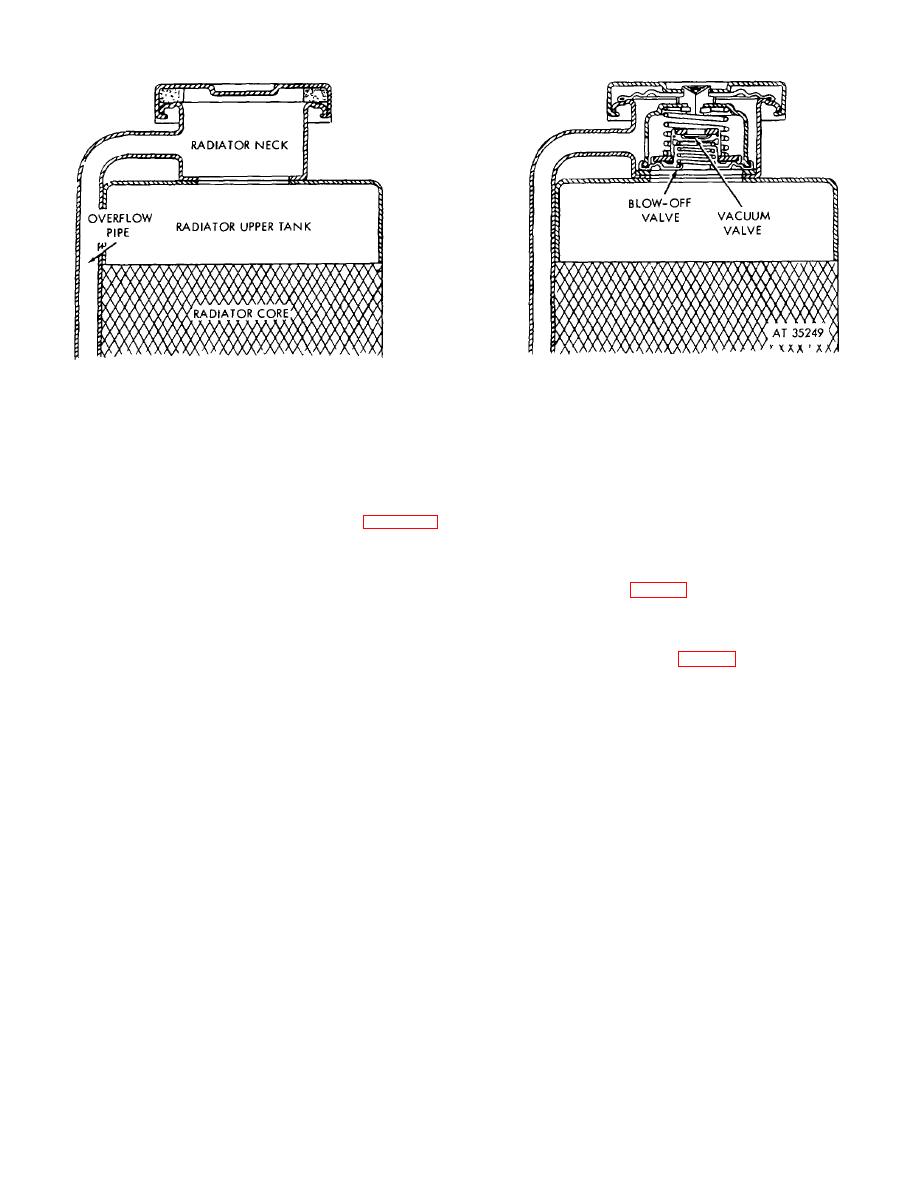 |
|||
|
|
|||
|
Page Title:
Figure 2-5. Radiator caps, plain - and pressure-type. |
|
||
| ||||||||||
|
|
 Figure 2-5. Radiator caps, plain - and pressure-type.
b. Causes of Failure The radiator cap is subjected
steam that might cause personal injury.
to high coolant temperature which cause relatively rapid
d. Handling and Maintenance To avoid damage to
deterioration of the gasket. The valves and underside of
cap gasket and gasket seat on filler neck, care should be
the cap are exposed to extremely corrosive effects of hot
exercised in removing and replacing cap. When filling
steam and air in the upper radiator tank. Since the cap is
radiator, metal filling spouts or nozzles should not be
located above normal liquid level, it receives little
allowed to come in contact with filler neck gasket seat.
protection from rust inhibitors in the coolant (para 2-32),
Proper maintenance consists of daily inspection of gap,
with the result that cap and valves may fall from corrosion
seat, and gasket, and periodic cleaning of cap and valves,
damage. Even a small amount of rust scale or dirt will
checking of valve operation, and testing for tightness of
interfere with operation of pressure and vacuum valves.
valves and cap seal (2, fig. 2-1).
Frequent removal and replacement of radiator cap for
coolant level observation increases the possibility of
leakage and pressure loss, due to wear of gasket and cap-
2-10.
Radiator
locking mechanism.
c. Effects of Failure An air leak above liquid level in
and road shocks put a strain on all radiator seams and
the radiator, such as at cap gasket or pressure valve, will
joints that may lead to breakage and leakage, particularly
prevent pressure from building up, and benefits of the
in water tubes, tanks, and outlet and inlet fittings.
pressure cap will be lost. Coolant may boil in some
Additional strain is set up by extreme changes In metal
cooling systems even at normal operating temperatures if
temperatures, especially during cold-weather operation.
the cap is not pressure-tight. If the pressure valve fails to
Cross-country driving over rough terrain multiplies the
open, sufficient pressure may build up in the system to
effects of ordinary shock and vibration. Neglect of small
break radiator seams or blow off hose connections.
leaks may result in complete radiator failure, excessive
Failure of vacuum valve to open when system cools may
leakage, rust clogging, and over-heating difficulties. Thus,
cause collapse of hose and other parts which have no
it is extremely important to keep the radiator mounting
internal support.
properly adjusted and tight at all times, and to detect and
correct promptly even the smallest leaks.
WARNING
The radiator cap should be turned to the "vent"
position before removing, to allow escape of hot
2-7
|
|
Privacy Statement - Press Release - Copyright Information. - Contact Us |